Rundown of the Latest and Greatest New Sax Gear (2024)

Mea Culpa
OK, so, maybe this article is based on an event that, at the time of this writing, happened about 5 months ago (aka NAMM 2024). And maybe we were a bit embarrassed to mention that in the title of this article.
However, what you’re about to read most certainly lives up to its headline and is a wide-ranging overview of what are indeed, some of the most compelling new products in the saxophone world.
And with that said, fasten your seatbelts for some serious sax gear geekery!
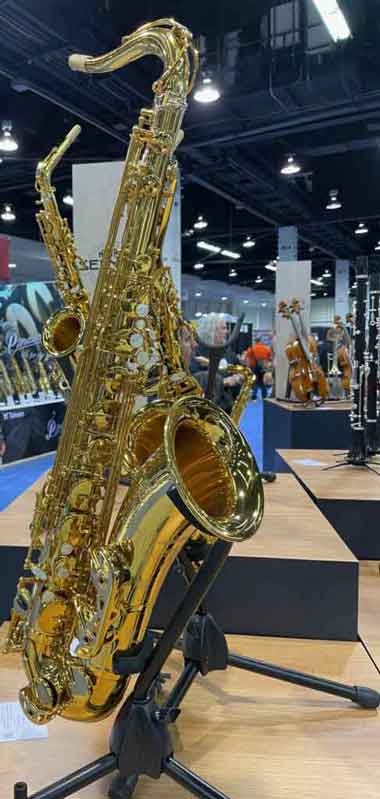
Introduction
Compared to NAMM 2023, NAMM 2024 felt more like NAMM shows of the past with a generally solid turnout of vendors, artists, hobbyists, and music lovers. As always, my focus here is what’s new in the saxophone world. I wasn’t able to attend all four days this year but still had the chance to meet up with various vendors to see what’s new, any updates to existing products and in general how have things been going as the music business continues to evolve. Besides the gear (which is my focus), one of the best parts of attending NAMM is the connections you make.
I will be covering the saxophone gear I had the chance to test play in the realm of saxophones, accessories, reeds, and mouthpieces. To those sax-related manufacturers and vendors I spoke with who may be reading this article, if your product was not included, it simply came down to time. That said, please feel free to reach out and I will be more than happy to learn more about your product and consider for further review.
The gear breakdown is as follows:
- Saxophones
- Mouthpieces
- Reeds
- Accessories
Saxophones
Selmer Signature Tenor Saxophone
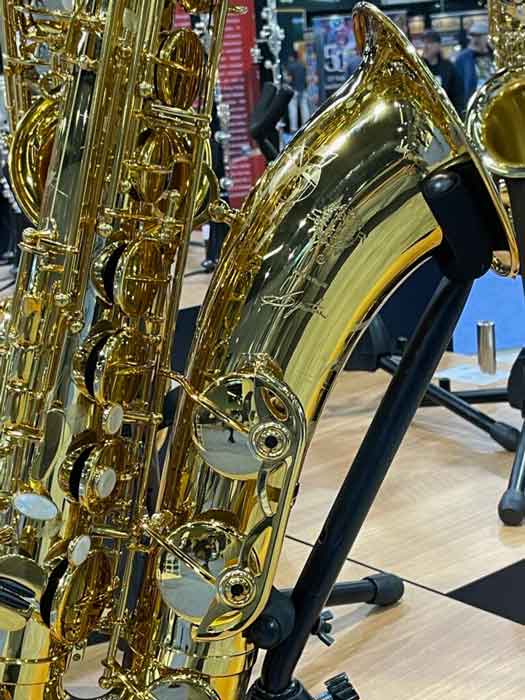
I had a chance to test play the Selmer Supreme tenor at last year’s NAMM show. However, soon after the release of the Selmer Supreme tenor and alto saxophone, Selmer released the Selmer Signature saxophone. The Selmer Signature model for tenor was designed to be an improved version of the Series III while the Signature alto is meant to be an improvement on the Series II.
I had a chance to play the Selmer Signature tenor saxophone while at the Conn-Selmer booth. Compared to the Selmer Supreme tenor, the Selmer Signature tenor embodies many of the same features as the Supreme but has a few differences which I will call out.
Similarities: Three-point concentric tightening point between the neck and body, body tube, octave mechanism, and low Bb to C# connection
Differences: Signature neck is slightly larger, the alternate F tear drop shape is more slanted compared to the Supreme, and the key action and tone hole placements and chimneys are slightly different.
Overall thoughts: The overall feel of the Signature model I played felt like it had tighter spring tension and the low Eb/C keys felt slightly different compared to the Supreme.
Sonically I felt the Signature neck was a bit more resistance compared to the Supreme neck but sonically found the sound to be similar. The intonation was pretty solid overall and although I feel the Signature is marketed towards the classical saxophonist, you can play multiple styles of music on this horn.
In comparison to the Supreme, I think I prefer the Supreme to the Signature but with that being said the Signature model is about $2,500 less than the Supreme and the necks for the two horns are interchangeable with either horn.
Maybe next time I would try the Supreme neck on the Signature tenor and see if I overall prefer the resistance. I think the Signature tenor is an improvement over the Series III but is it worth $9,000+ price tag? That is hard to say. If you are in the market for a new Selmer saxophone, I would highly recommend you try the Supreme and Signature if possible because I can see how the differences between the two horns could be either a plus or a minus depending on the individual player.
Forestone GX Tenor Saxophone Colors Series
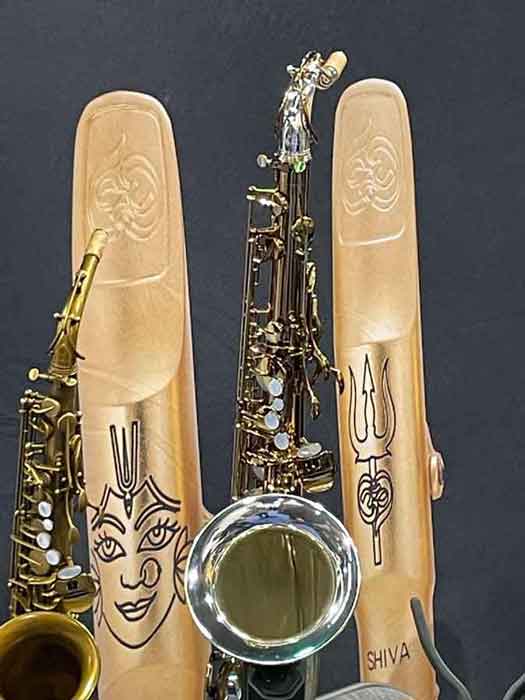
While at the Theo Wanne booth, I was able to meet up with Lars Heuseler who is the CEO of Forestone. At the show this year, he brought a few of their new model reeds for alto (further review below) as well as a few of their Forestone GX series saxophones ,and in particular a GX series tenor with a silver plated neck, bell, and bow with a cognac body and key finish.
When I visited the Forestone shop in Osaka a few years ago, I had the chance to test play the GX, SX, and RX and really enjoyed playing the unlacquered RX and SX without the high F# that may have been a special request. This Forestone GX series tenor played well from top to bottom.
Overall, I think this finish is more for aesthetic reasons and I personally didn’t notice a difference in the sound between previous GX series tenors I have played in the past. I found the keywork to be comfortable and reminded me of a Super Action 80 Series II.
I know many of the parts come from Taiwan with input from the shop in Japan as well as some of the materials are made in house with the setup being down at the Forestone shop. I believe this setup makes the difference and what sets the GX series apart from being just another Taiwanese saxophone. The GX series line of saxophones starts in the low $3,000’s and the Colors series, which is the model I played, starts in the low $4,000’s.
Trevor James Prototype Tenor Neck
Unfortunately I did not take a picture of the Trevor James prototype neck, but please see the video below from Derek at Sax Spy demonstrating the Trevor James Raw XS tenor with the prototype neck.
When I spoke with Trevor Jones distributor, Sandro Massullo about this neck, he told me the angle is lower compared to the current TJ neck and they messed around with the octave key vent placement. Sandro said that by adjusting these two items led to the current prototype, which creates a sound that is more compact and offers a stronger core along with a little bit more resistance level for a player to push against.
Sandro feels many players may prefer this neck over the current neck, which is more free-blowing, but the sound may be more spread. I tried both necks. Overall, I liked how the current prototype neck played. The octave mechanism reminded me of what you would see on a vintage Conn but more importantly, I found the TJ prototype had more core to the sound which could have been due to the lower angle providing more resistance to push against. I also found the color or timbre to be a bit more complex.
I think players coming more from an SBA or Mark VI may find the TJ prototype neck to feel more “at home” than the current neck, but everyone is different. The TJ prototype neck played well in tune from bottom to top and was easy to sub-tone.
Sandro said they are still working on further tweaks before going into production, but you may see this neck in the future as an alternative neck or potentially one associated to a new model. Once this neck is released, I’d give it serious considering if you are looking to buy a new horn but also considering a new neck replacement as the solution.
Rampone & Cazzani R1 Jazz Gold Plated Tenor Saxophone

While visiting the Rampone & Cazzani (R&C) booth this year, I saw the return of the Solitsa alto and tenor, various necks for alto and tenor with different angles and made from different materials (brass, copper, sterling silver, etc.), and the R&C Performance models which were quite popular this year.
What I did notice this year which I had not had the chance to try was the R1 Jazz tenor0 in 24k gold plated finish. The 24k gold plating was across the neck, body, bow, and bell. The R1 Jazz model has been my favorite model Rampone & Cazzani produces today, even though I generally like all the models.
I found the 24k model in comparison to the standard R1 Jazz brass to have a slightly bit warmer sound along with more clarity to the sound and with limited “edge”.
Now this is quite subjective depending on your setup, but I think many of you who have played the R1 Jazz tenor before will be pleased with the gold-plated finish. From a pricing perspective, the gold-plated model does increase the price a noticeable amount, so my suggestion is if you have a flexible budget and like the R1 Jazz, then I would try the gold-plated finish if possible. However, if you are on a more limited budget, then I would focus just on the R1 Jazz tenor as I still think you will be quite pleased.
Other Gear I’d Like to Check Out
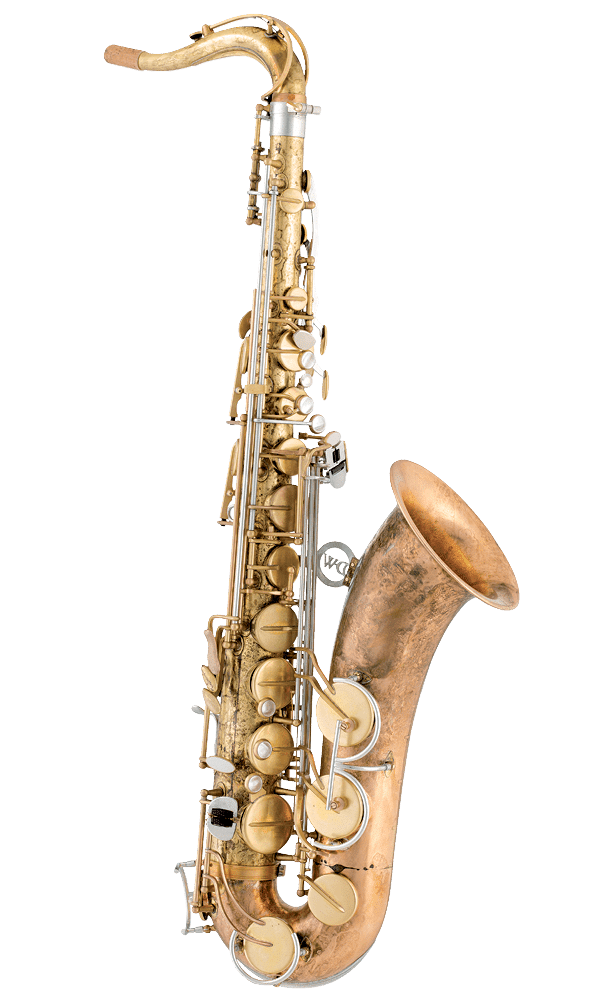
Mouthpieces
Theo Wanne Lakshmi Alto Mouthpiece – (6)
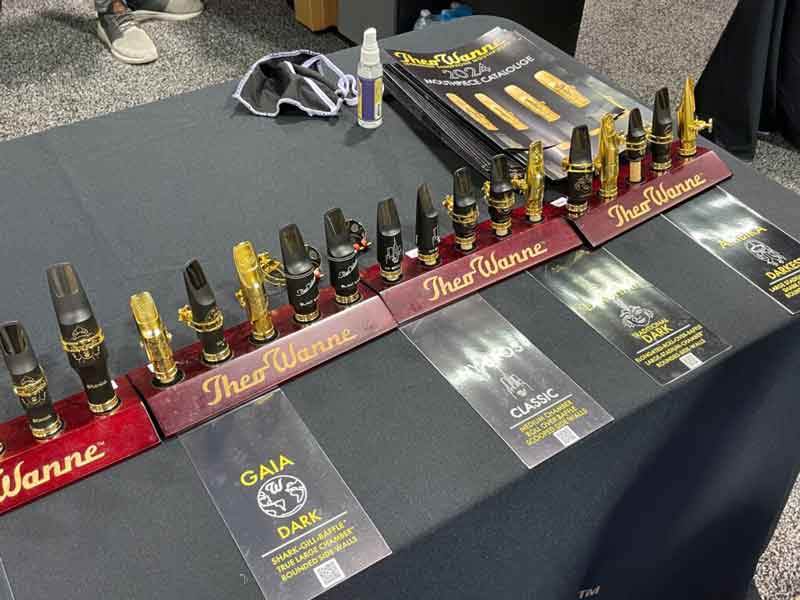
I played the Lakshmi metal tenor mouthpiece last year which was based on the vintage Otto Link Florida and Dukoff Stubby mouthpieces. Overall, I really liked this particular model. The Lakshmi alto is one of Theo’s newer alto models and is geared towards those players who typically play a Meyer or Meyer-like mouthpiece (vintage & modern), but this particular model has a roll-over-baffle and what Theo calls “Large-Stadium Chamber”. The Large-Stadium Chamber combines medium and large chamber sections.
I found the Lakshmi played well from top to bottom. The sound seemed to lean more towards the darker side in comparison to Theo’s other models as well as the Meyer’s I have played in the past. I felt that with the Lakshmi’s larger chamber, I was able to put more air through the piece, leading to solid projection. At the same time, I didn’t find that the larger chamber caused the sound to be more spread, and actually had a nice core, depending on how you focused your airflow is.
Overall, I was quite happy with the Lakshmi model and view this piece being most popular with players who like Meyer mouthpieces but have been wanting to try one with a large chamber.
Jody Jazz DV HR (7*) & Jody Jazz HH Metal Mouthpiece (7*)
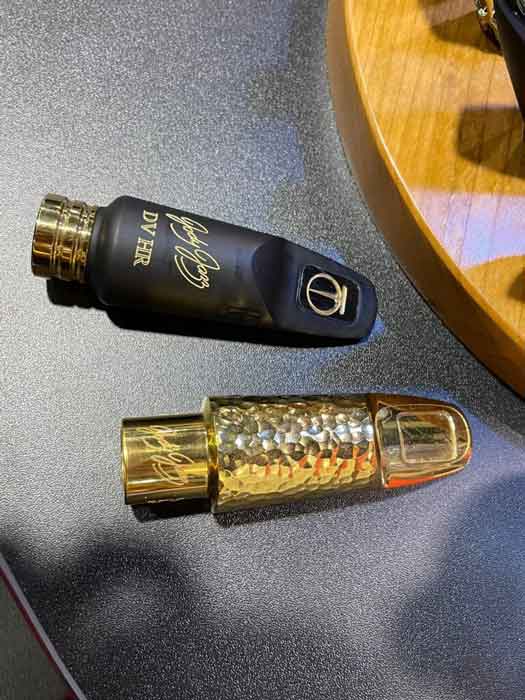
This year I was able to try the Jody Jazz DV HR and Jody Jazz HH metal mouthpieces. The Jody Jazz DV HR was a very free-blowing mouthpiece that was easy to sub-tone and control at various dynamic levels. I found the sound was neither leaning towards the bright or dark side, but depending on your setup, you could get a bright or dark sound.
I have always liked the Jody Jazz DV and DV NY metal mouthpieces, but still preferred playing on hard rubber. I think the Jody Jazz DV HR is the answer to that as well as offering the player a more affordable option. Now, the Jody Jazz HH metal mouthpiece was one of the more interesting pieces I have played in a while.
Besides the HH standing for Hand Hammered it is probably one of the heaviest mouthpieces I have ever picked up. When I started playing the Jody Jazz HH, besides it being free blowing and very easy to control at various dynamic levels, the overall sound was not harsh, but actually very clear and fell in the middle of the sound spectrum (not too bright nor too dark).
I did not find the sound harsh or too edgy when you really pushed it, and the core was there. Compared to the other Jody Jazz models, I felt the HH embodies complex timbres which I feel many players are looking for in a mouthpiece. I would have to say that previously the HR* Custom Dark and DV HR were my favorite Jody Jazz models, but after trying the HH, it is my new favorite.
With that being said, at $895.00 this mouthpiece is not for everyone so for those of you that are more on a limited budget, I think you will be happy with the Jody Jazz DV HR. But for those who like Jody’s pieces and “sky’s the limit”, I think you will be very pleased with the HH model.
MACSAX Amaryllis Classical mouthpiece
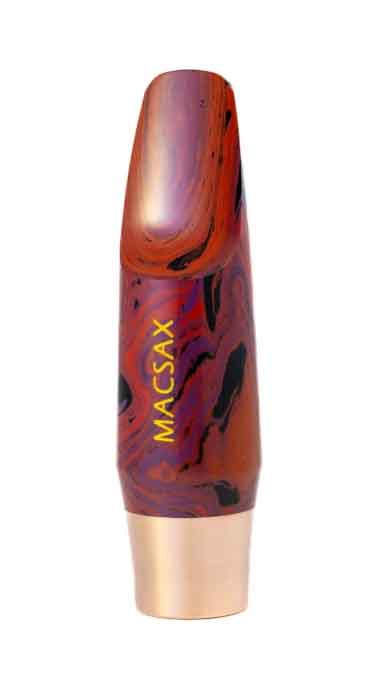
While checking out the Retro Revival saxophones and mouthpieces at NAMM, I ran into Jeff Gjertsen who does all the modeling and CNC work for MACSAX pieces. Many of you are probably familiar with the MACSAX saxophones and mouthpieces in the past, but recently Jeff introduced a line of classical saxophone mouthpieces.
Jeff’s stated goal here is to offer students and professionals a line of classical mouthpieces that are affordable to those players looking to upgrade from their first mouthpiece and wanted to try something different from than the popular Vandoren, Selmer C*, etc.
I did not have a chance to try the alto line but was able to test play the Amaryllis, whose design and playing characteristics were derived from the Lotus classical alto and scaled up to tenor. The Amaryllis model was designed in collaboration with James Bunte (professor of saxophone as well as a fellow mouthpiece maker) with the goal of producing a modern classical tenor mouthpiece that had a round chamber and medium-long facing curve that produced a responsive and free-blowing experience and delivered a sound rich in warmth and clarity.
Now to be fair, I am not a classical saxophonist and am much more focused on jazz, so the .070 tip opening felt quite closed to me personally. With that being said, when I tried the Amaryllis, I understood what Jeff was going for. The mouthpiece did take me some time to adjust to as a result of the smaller tip opening and chamber, but I could get a clear and warm sound from low Bb to high F#. I liked the response, playability and overall sound I got from this piece in comparison to other popular classical mouthpieces.
For my style of playing, I much prefer vintage Links, Stubby’s, Brilharts, and other modern pieces. But if I had to play classical repertoire, I would highly consider checking out the MACSAX line of classical mouthpieces for alto and tenor due to their overall quality and price point.
Future Gear To Check Out
JJ Babbitt Meyer Bros Tenor, LA, and updated V Super Tone Master
Reeds
Forestone Prototype Reed – Alto (2, 2.5, 3)

Since Forestone released their first reed called the “Traditional”, which features a polypropylene resin and cellulose wood fiber (over 50% of the wood fiber being bamboo), they have released additional models such as the Black Bamboo, Hinoki, and White Bamboo.
At this year’s show, besides showcasing the Forestone GX saxophones, I met up with Lars (CEO & Co-Founder of Forestone) and he let me know that they just introduced a new Forestone reed, which at the time of writing is still a prototype which was developed over the past five years. This new model was designed with the classical player in mind with a very clean sound and more resistance.
This reed has relatively long fibers and is machined versus injection-molded. Of the strengths Lars had me play test, I liked the 2 and 2.5.
Overall, the new model did have more resistance in comparison to the other models, but the new model responded well from top to bottom, felt comfortable for a non-traditional cane reed, and did not have the buzz or thinness I sometimes find with non-traditional reeds.
Sonically, I believe you could play bright or dark on this reed, but I think the sound lends itself more to the darker side based on the cut. I would be interested in trying this new model on tenor saxophone to see if my experience is the same as on alto. I want to thank Lars for taking the time to share more about this new model and looking forwarded to learning more when it is officially released
Légère French Cut (3.0) Tenor Saxophone Reed
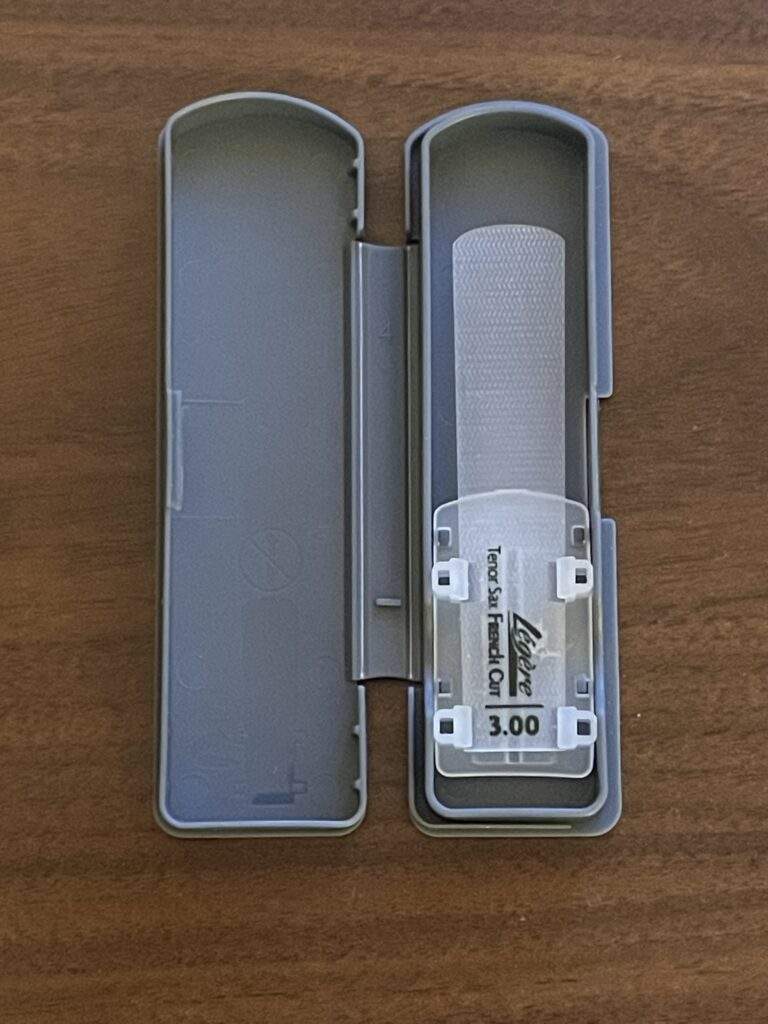
I had tried the Légère Signature reed a while back and of the Légère cuts, I preferred this one over the Classic and American cut. I found the overall response and projection was good, with the sound falling into between of dark and bright through most of the range of the horn, and slightly on the brighter side when pushed into the palm keys.
I had a chance to test play the French cut which Sean King, Manager of Artist and Customer Experience described as more geared towards the classical saxophonist. But to be honest, I think the French cut is my favorite cut that Légère offers. I found the French cut played on the darker side in comparison to the Signature cut and had more resistance.
Even though this reed was more resistant, I found this to be a good thing since I do find the synthetic reeds to not only sound a bit buzzy and thin depending on strength, but also less flexible. However, this reed gave me more control and overall comfort. The response and projection I found to be fairly similar to the Signature.
Over the years, I have still gone back and forth between synthetic and cane reeds, and still prefer cane, but if I had to play a synthetic reed, I would definitely revisit the Légère French cut.
Accessories Of Note
Marmaduke neck screw – Aluminum
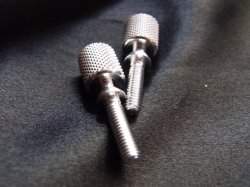
ReedGeek – Large Geek
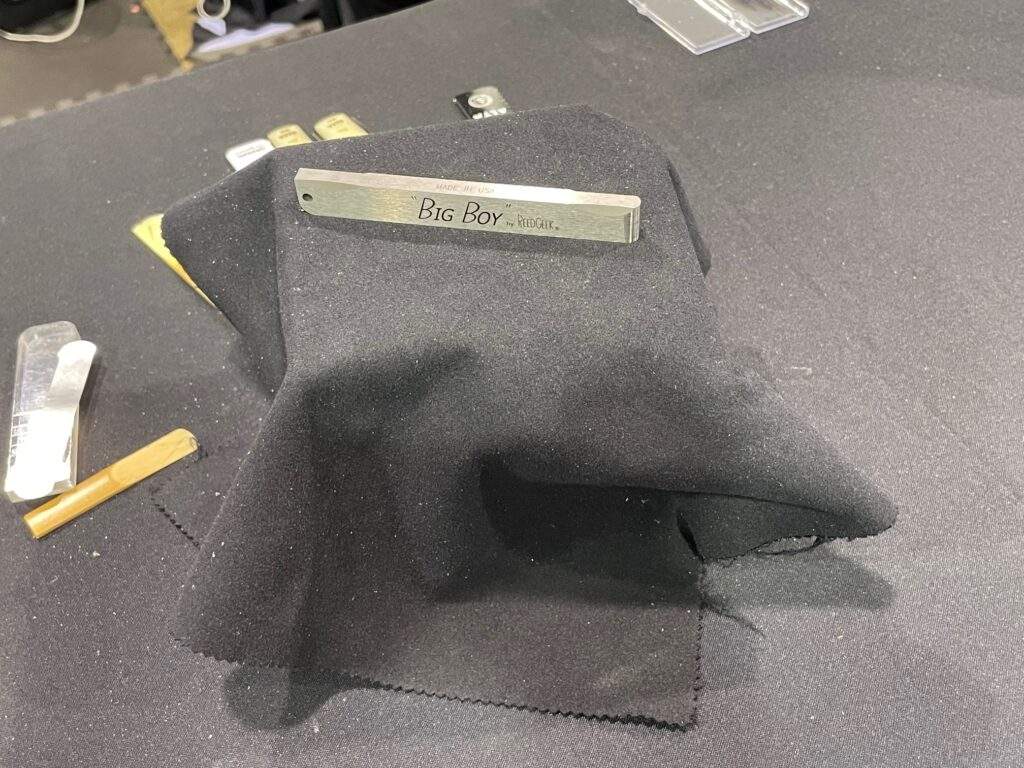
Final Thoughts
It was great returning to the NAMM show this year. I will say that based on attendance from artists, guests, and exhibitors, this show felt more like the shows of years past compared to the smaller turnout in 2023. I still believe that there is value in attending NAMM from the standpoint of an individual player, and to a certain extent, as someone working in this line of business. I believe that that the significant expenses involved in not only purchasing a space for an exhibit booth, but also flight, hotel, and additional expenditures can make NAMM cost prohibitive and not the right investment for every brand.
Unfortunately, as is always the case, I was not able to visit every booth and play test every product that I wanted to, but I do hope that this rundown of some of the highlights was helpful to you and offered some new avenues to explore when it comes to your next purchase of saxophone gear.
I want to thank all those exhibitors who took the time to meet with me and share what’s new in terms of products as well as their business as a whole. I am looking forward to reviewing some of this gear in more detail in the future and hope to see everyone at NAMM 2025!





